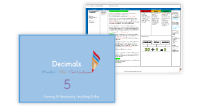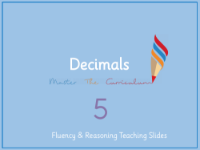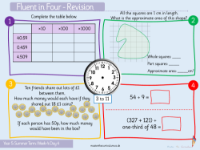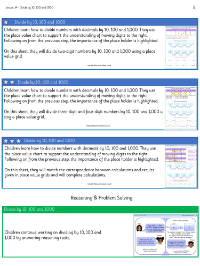Decimals - Divide Decimals by 10, 100 and 1,000 - Planning
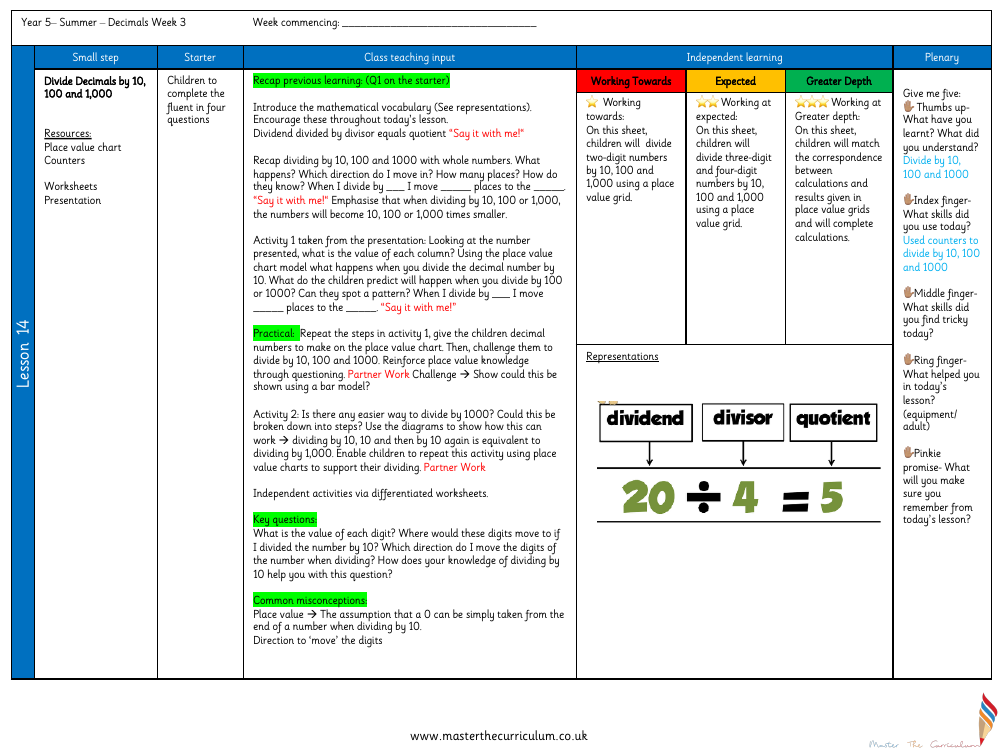
Maths Resource Description
In a Year 5 mathematics lesson focused on decimals, students learn to divide decimal numbers by 10, 100, and 1,000. The lesson begins with a starter activity that includes a quick recap of previous learning and a series of questions to get students thinking. To support the day's learning, resources such as place value charts and counters are utilised, alongside worksheets and a presentation. The class is introduced to the relevant mathematical vocabulary and concepts, reinforcing the process of division and its effect on the place value of digits within a number. Students are reminded that dividing by these factors results in the number becoming proportionally smaller, and they are encouraged to verbalise the steps of the division process.
During the session, students engage in practical activities to deepen their understanding. Activity 1 from the presentation prompts students to use a place value chart to model the process of dividing a decimal number by 10 and to make predictions about the patterns they observe when dividing by larger factors. The practical application continues as students use counters to represent decimal numbers and divide them by 10, 100, and 1,000, further reinforcing their understanding of place value. The lesson also includes partner work challenges that involve using bar models to represent division. Towards the end of the lesson, differentiated worksheets provide independent practice, catering to varying levels of ability. Students reflect on their learning by identifying what they have understood, the skills they have used, and any challenges they encountered. The lesson aims to ensure that students can confidently divide two, three, and four-digit numbers by 10, 100, and 1,000, using a place value grid and apply their knowledge to match calculations with results.

